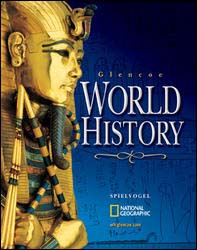Glencoe World HistoryChapter 23:
War and Revolution, 1914–1919Chapter OverviewsAn assassination in the Balkans sparked the outbreak of World War I. Millions died during the war, which also led to a revolution and Communist rule in Russia. The war settlements redrew the map of Europe and imposed heavy penalties on Germany. Section 1 The Road to World War I
Competition over trade and colonies led to the formation of two rival European alliances—the Triple Entente of Great Britain, France, and Russia; and the Triple Alliance, consisting of Germany, Austria-Hungary, and Italy. Repeated crises over Serbian claims on the Austro-Hungarian region of Bosnia revealed the dangers inherent in these alliances. Austria-Hungary, as well as numerous other European governments, confronted challenges from minorities that wished to establish their own national states. Strikes and violent actions by Socialist labor movements also threatened European governments. Many states responded with increasing militarism. The assassination of the heir to the throne of Austria-Hungary by a Bosnian Serb militant set off a chain of diplomatic and military decisions that led all of the great powers of Europe into World War I. Section 2 The War
Most people in 1914 believed that the war would end quickly. The picture changed, though, as trench warfare between France and Germany turned into a stalemate and casualties mounted throughout Europe. Italy switched sides, and the Ottoman Empire joined the war on the side of the Triple Alliance. The war broadened further when German colonies came under attack and the British encouraged Ottoman provinces in the Middle East to revolt. The United States entered the war in 1917 in response to the German use of submarines against passenger ships. As the war dragged on, governments took control of national economies, censored the news media, and used propaganda to bolster public opinion. Women entered the workforce in large numbers. After the war, many lost their jobs to men but gained expanded rights and status. By 1921 women had the vote in Austria, Germany, Great Britain, and the United States. Section 3 The Russian Revolution
Russia was unprepared for World War I and suffered massive casualties early in the war. Bread shortages and anger at the mounting casualties brought street protests led by working-class women and a workers' general strike. Nicholas stepped down as czar, and a provisional government was formed. Meanwhile, soviets—councils representing workers and soldiers—sprang up throughout the country. In the soviets, Bolsheviks, a socialist group committed to violent revolution, played a crucial role under the leadership of V.I. Lenin. In October 1917, the Bolsheviks overthrew the provisional government. The czar and his family were held captive and then executed by members of a local soviet. Civil war ensued between the Bolshevik Communist regime and anti-Communists. Despite aid from the Allied forces, the anti-Communists were defeated by a well-disciplined Communist Red Army. Section 4 End of the War
Allied forces finally defeated Germany at the Second Battle of the Marne but would not make peace with the German emperor. In the face of upheaval, William II fled Germany. Social Democrats then formed a democratic republic, which signed an armistice with the Allies and crushed a Communist attempt to seize power. The Austro-Hungarian empire dissolved into four separate states. U.S. President Woodrow Wilson sought to pave the way for a just and lasting peace by creating the League of Nations. However, the Treaty of Versailles imposed harsh penalties on Germany. The war settlements redrew the map of Europe and dissolved the Ottoman Empire. Ignoring promises made during the war, France and Britain took control of several Arab states. Despite the principle of self-determination, many Eastern European states included large ethnic minorities, setting the stage for later conflicts.  | 

















